Are you planning to plant tomatoes this season and unsure about the appropriate size of the grow bag to use? If so, you are in the right place. Grow bags provide a space-saving solution for planting tomatoes – they can replace traditional containers and even eliminate the need for a raised bed by allowing roots to stretch out with no danger of overcrowding the soil! In this blog post, we will discuss everything you need to know about grow bags including recommended sizes, proper drainage, and tips on how to maximize your tomato yields using these handy items. Learn about how to grow tomatoes using grow bags by continuing to read!
What Size Grow Bag Is Best for Growing Tomatoes?
The size of the grow bag you use can significantly impact the success of your tomato crop. Tomatoes require plenty of space for their roots to spread out and access nutrients. If you choose a bag that is too small, or doesn’t allow enough room for root growth, your plants won’t perform as well as they could.
So what size grow bag should you use when planting tomatoes? Ideally, you should look for bags that are at least 10 gallons in volume. This will provide plenty of room for the tomato plant’s roots to spread out and access all the oxygen and water needed for healthy growth. It’s also important to ensure that the material used in the bag is breathable, as tomato roots need to be able to access oxygen. [1]
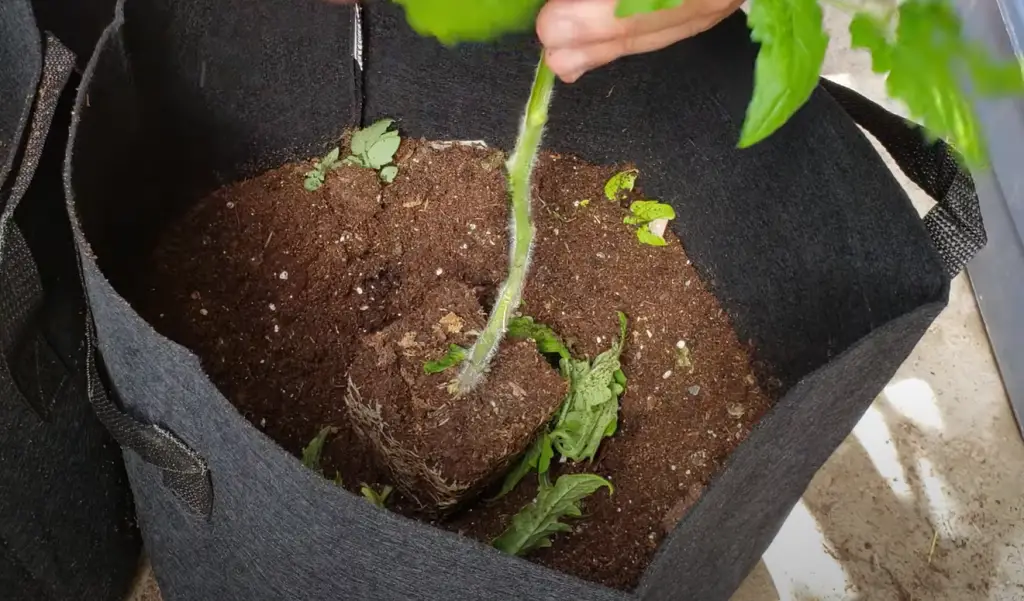
In addition to size and material, it’s also important to consider the number of plants you’ll be growing in each bag.
You may even want to consider using multiple smaller bags if you are planting more than three or four plants.Finally, when selecting a grow bag for your tomatoes make sure that it has good drainage capabilities. Tomatoes need plenty of water but their roots don’t like being waterlogged – so having adequate drainage will help ensure that they have access to enough water without becoming too saturated.
Factors to Consider When Selecting the Right Size Grow Bag
Plant Variety, Stage of Growth & Harvest Goals
Different varieties of tomatoes require different amounts of space to reach their full growth potential. So, it is important to select the appropriate size grow bag for your plant’s needs and growth stage. Depending on the variety and how many harvests you want, you might need smaller or larger grow bags.
Soil Type and Fertility Requirements
Different soil types and fertility requirements may also require different sized grow bags. For example, if you’re using a nutrient-dense soil mix or adding fertilizer to the bag, you’ll need more space for your plants to benefit from it.
Sunlight Exposure & Temperature Requirements
The amount of sunlight your tomato plants receive and temperature requirements also determine the size of the grow bag you should select. If your plants are receiving direct sunlight, they will need more space to avoid burning from the heat.
Water Availability & Drainage Capacity
It’s important to consider the water availability and drainage capacity when choosing a grow bag.
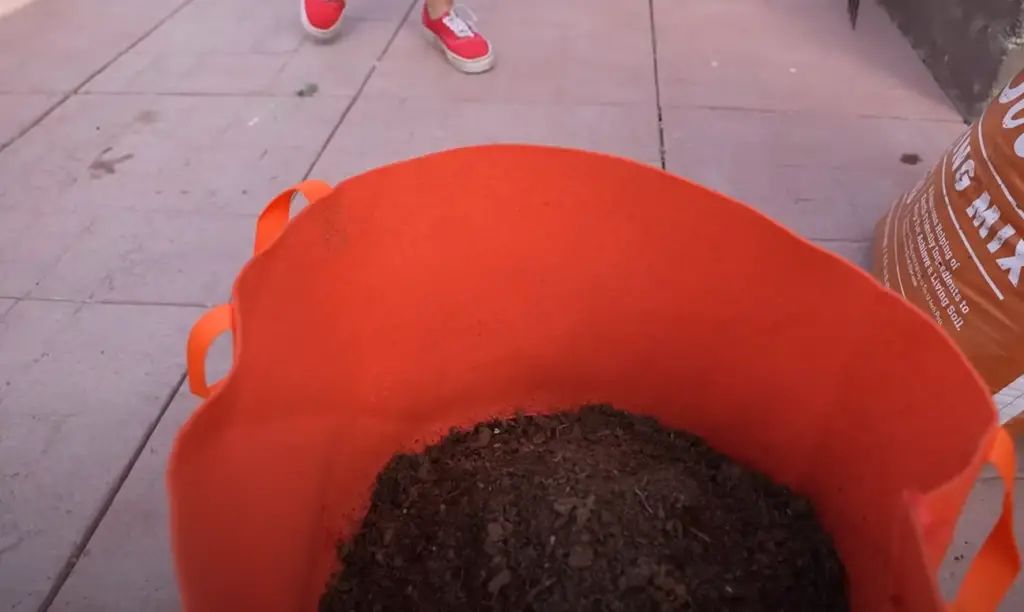
Selecting the right size will ensure that your tomato plants have enough space for their roots to spread out and absorb water, while ensuring proper drainage.
Space Availability & Growing Environment
Finally, you should take into consideration the environment where you’ll be growing your tomatoes. If space is limited, then selecting smaller grow bags may be the best option. However, if you have more space available in your garden or greenhouse, then larger bags can be used for better yields and harvests.
By taking all of these factors into account when selecting a grow bag for your tomato plants, you can make sure that they get the right amount of air, nutrients, and water to reach their full potential. This will help ensure a successful harvest and abundant yields!
Types of Grow Bags for Tomatoes
Grow bags are a great way to grow tomatoes in any space, indoors or outdoors. Depending on the size and type of tomato you want to cultivate, there is an ideal grow bag size for your needs.
Common sizes available are 1 gallon, 2 gallon, 3 gallon, 5 gallon and 7 gallons. The smaller sizes are great for growing cherry tomatoes while the larger sizes can handle full-sized beefsteaks. [2]
If you’re looking to plant multiple varieties of tomatoes in one area, consider investing in larger grow bags. Many people opt for large 10-20 gallon sacks so that they can mix different plants together without overcrowding them.
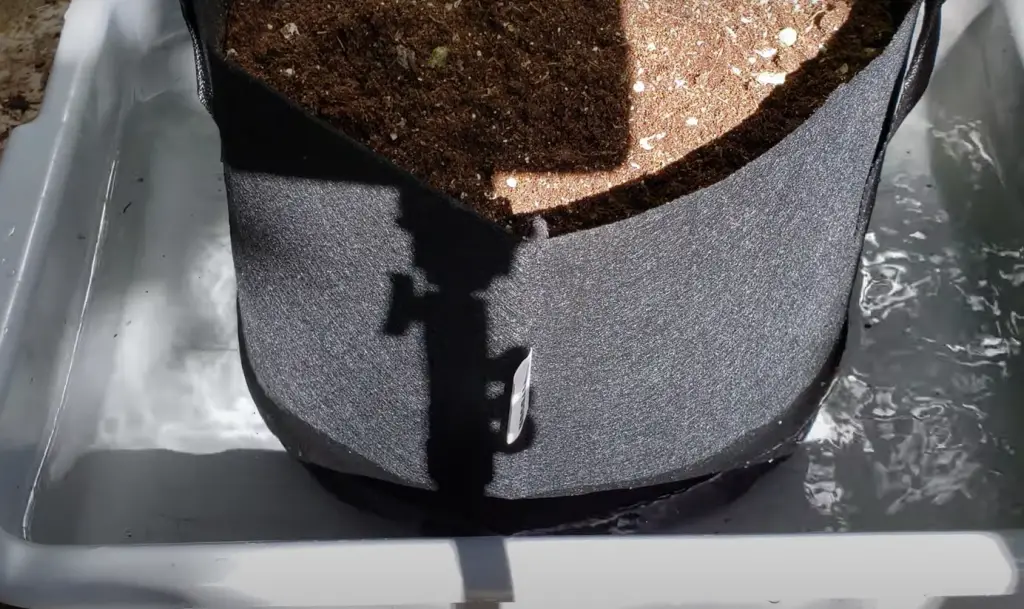
When selecting a size of grow bag for your tomatoes, you should also take into consideration the types of soil available in your space. If you’re using a light potting mix, then smaller bags will work best to ensure adequate drainage and aeration of the soil.
On the other hand, if you are using heavier clay-based soils, then larger grow bags will be necessary to accommodate their weight.
No matter what size or type of grow bag you choose for your tomatoes, proper watering and fertilizing is essential to ensure success. Be sure to read up on the specific requirements of each variety before planting and follow all instructions closely! With a little bit of effort and some careful selection, you can have a delicious crop of homegrown tomatoes with ease!
How to Plant Tomatoes in a Grow Bag
Planting tomatoes in a grow bag is an easy and cost-effective way to get your own home garden up and running. Growing tomatoes in a grow bag allows you to space out the plants, create better drainage, reduce weeds, and improve air circulation. With just a few supplies and some simple steps, you can start growing delicious tomatoes right away!
Before planting your tomatoes in a grow bag, make sure that the size of the bag will support the roots while still allowing plenty of room for growth.
Once you have the right size bag, choose a location that gets full sun and requires minimal maintenance. Make sure to avoid spots with deep shade or other plants that could compete for resources. Then begin filling your grow bag with a quality potting mix, ensuring that it’s completely saturated before planting.
When you’re ready to plant tomatoes, make sure to dig at least two inches (5 cm) into the soil when creating your planting holes and space each hole about 18 inches (45 cm) apart. Place your chosen tomato plant in each hole then cover the roots with more soil until it’s level with the surface of the grow bag. Water thoroughly so that all of the soil is completely saturated and then give the tomatoes the right amount of water each week.
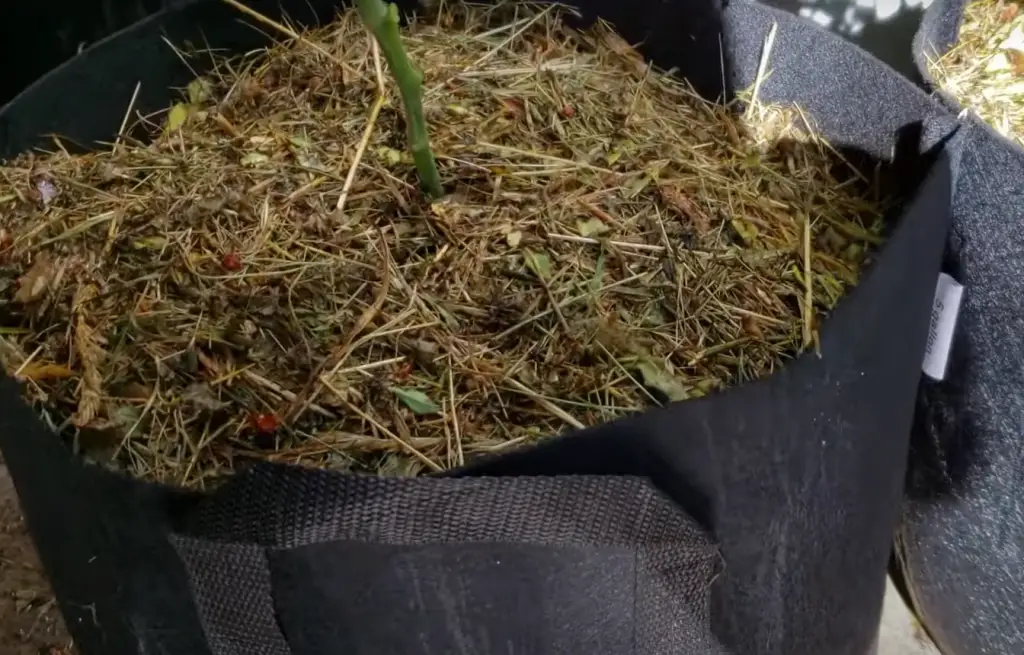
Tomatoes are susceptible to pests and diseases, so it’s important to keep an eye out for any symptoms that could indicate a problem. If you notice any discoloration, wilting, or other abnormalities, take action quickly to treat them before they can spread. With the right supplies and some simple steps, planting tomatoes in a grow bag can be a rewarding experience!
Tips for Successfully Growing Tomatoes in a Grow Bag
- Choose the right sized grow bag for your tomatoes: The size of the grow bag will depend on the type of tomato you are growing. For small varieties, such as cherry tomatoes, a 10-20 liter (2-4 gallon) bag should suffice. For larger varieties like beefsteak tomatoes or
- San Marzano tomatoes, you may need to use a 25-45 liter (5-10 gallon) bag. [3]
- Allow plenty of room for drainage: No matter what size grow bag you choose, make sure there are enough drainage holes at the bottom for excess water to escape and air to flow in and out freely. This is especially important since tomato roots require oxygen to thrive and do not do well in overly wet, soggy soil.
- Position the bag in a sunny spot: Tomatoes need at least 6-8 hours of direct sunlight each day for optimal growth and fruiting.
- Choose a spot that receives ample sunshine throughout the day and adjust accordingly as the season changes and light shifts around your garden beds or patio area.
- Fill with nutrient rich compost: Tomato plants require lots of nutrient dense food to produce large, sweet tasting fruit. A good way to ensure this is to fill your grow bag with high quality compost which should have enough nutrients already present for 3-4 months worth of growth. If needed, supplement with fertilizer every couple of weeks or so to maintain consistent nutrition levels during the growing season.
- Monitor soil moisture: Tomatoes will not thrive if the soil is too dry or too wet, so make sure to keep an eye on it throughout the growing season and apply water accordingly when needed. If possible, check the soil moisture level every day to ensure your plants are always getting just enough hydration for optimal growth and fruit production.
- Prune regularly as needed: As your tomato plants grow, you may need to prune off branches that have become overcrowded or diseased in order to promote healthy growth and maximize yields. To do this, use sharp clean sheers and snip off any foliage that looks unhealthy or has become overgrown. [4]
Troubleshooting Common Tomato Plant Problems
Growing tomatoes can be rewarding, but there are a few common problems that you may encounter. Here is an overview of the most common issues and tips on how to prevent or fix them:
- Blossom End Rot: This is caused by uneven watering, resulting in calcium deficiency in the tomato plant. To prevent this from happening, make sure to water your plants regularly with deep soaks. If blossom end rot does occur, increase calcium levels by adding a fertilizer containing calcium to the soil and use mulch around the base of the plants to help retain moisture. [5]
- Split Fruits: Tomatoes split when they are overwatered – either too much rain or irrigation at one time causes them to swell and eventually crack. Avoid this by planting in well-draining soil and using a soaker hose or drip irrigation instead of overhead watering.
- Early Blight: Caused by a fungus, early blight will cause leaves to yellow and spots on the fruits. To prevent early blight from occurring, make sure your tomato plants get plenty of air circulation and try to keep foliage dry. Treat existing infections with a fungicide like Neem oil.
- Green Shoulders: Tomatoes that don’t get enough sunlight may have green shoulders – the area closest to the stem stays green while the rest of the fruit ripens properly. Giving your tomatoes plenty of sun should help with this problem; if not, try removing some of the leaves to allow the sun to reach the unripe fruits.
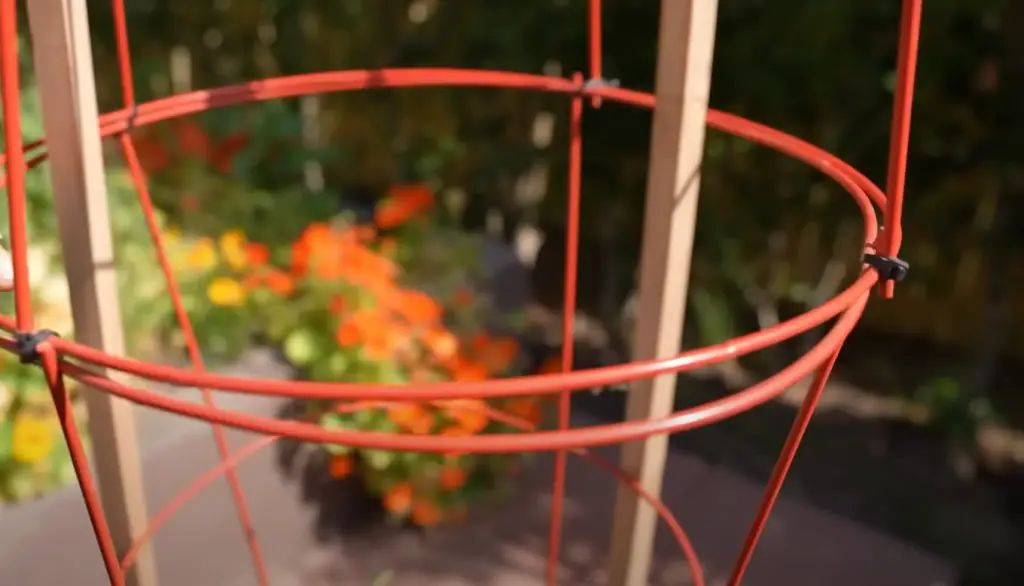
Following these tips should help ensure that your tomato plants remain healthy and produce delicious fruits throughout the growing season.
FAQ
What is the ideal size of a grow bag for tomatoes?
Generally, the ideal grow bag size for tomatoes is 5 to 10 gallons. However, this may depend on the variety of tomato and how many plants you intend to grow in each bag.
How do I choose a grow bag for my tomato plant’s variety, stage of growth and harvest goals?
When choosing a grow bag for your tomato plant, you should consider the variety of tomato, the stage of growth and your harvest goals. For example, if you have a determinate variety of tomato, such as Roma or San Marzano tomatoes, then you will want to choose a shorter grow bag with a width of 10-12 inches. This size is best suited for smaller bush varieties that can be easily harvested from the top of the container. On the other hand, if you have an indeterminate variety such as beefsteak or heirloom tomatoes that are vining plants and require trellising for support, then you may want to choose a larger grow bag with a width of 14-16 inches in order to provide enough space for the roots and the support structure. Additionally, if you have a large harvest goal, then it’s best to choose a grow bag with a larger capacity as this will help ensure that your tomato plant remains healthy and productive throughout its entire growing season.
Can I use any type of soil in a grow bag for tomatoes?
Yes, you can use any type of soil in a grow bag for tomatoes. However, it’s best to choose a well-draining potting mix that is specifically designed for container gardening and contains organic matter such as compost or peat moss. A good potting mix should also contain some slow-release fertilizer to provide essential nutrients to your tomato plant throughout the growing season. Additionally, adding some sand or perlite to your soil mixture will help with drainage and aeration, which are both necessary for healthy tomato plants. It’s important to remember that when using a grow bag, you should never add more than 2 inches of soil at once so as not to overburden the container. Finally, be sure to water your tomato plant regularly and provide adequate light for optimal growth.
Do I need to provide additional water and drainage capacity for tomatoes grown in a grow bag?
Yes, tomatoes grown in a grow bag will need additional water and drainage capacity. It’s important to remember that tomato plants require consistent moisture throughout the growing season but can be easily over-watered if not monitored carefully. Therefore, it’s essential to check your soil frequently and provide supplemental irrigation as needed. Additionally, you may want to consider adding an extra layer of fabric at the bottom of the grow bag or use a container with built-in drainage holes in order to ensure proper drainage for your tomato plant.
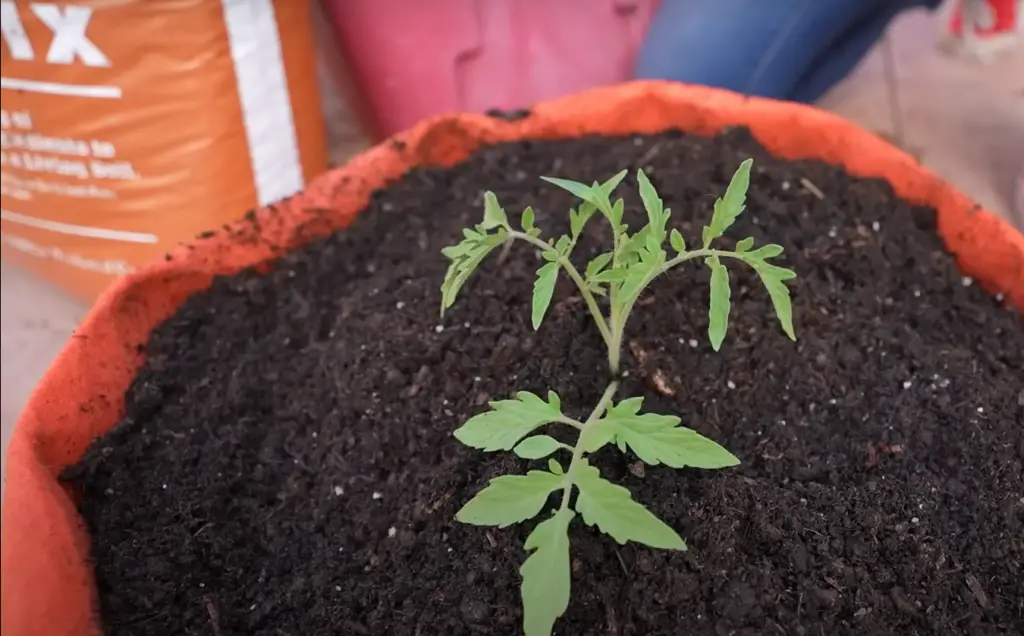
This will help protect your tomato plant from root rot caused by excessive moisture. Finally, make sure to check your containers regularly for any signs of potential pest or disease problems so that you can address them quickly and keep your tomato plants healthy and productive throughout the growing season.
What are the most important tips for successfully growing tomatoes in a grow bag?
Growing tomatoes in a grow bag can be a great way to have more control over the growing environment than traditional gardening and to save space. However, the success of tomato plants grown in grow bags depends on several factors. Here are some important tips for getting the most out of your grow bags:
- Choose a potting mix that is specifically designed for use in containers or grow bags. This will provide your tomato plants with all the necessary nutrients they need to thrive.
- Make sure you give each plant enough room to spread its roots by planting them at least 12 inches apart when you’re using smaller pots and 24 inches apart when using larger containers.
- Keep an eye out for pests and diseases. Use a preventative spray or organic pest controls as soon as you spot any signs of an infestation.
- Water the plants regularly and deeply to ensure they are getting enough moisture and nutrients. Check the soil before every watering session to make sure it is still moist.
- Give your tomato plants support by erecting a stake or trellis in the grow bag for them to climb on. This will help them reach their full potential and provide you with better fruit yields. Following these tips should help you get the most out of your tomatoes grown in a grow bag!
What should I do if my tomato plants start showing signs of disease or pests?
If your tomato plants start showing signs of pests or disease, you should act quickly. Take a look at the leaves and stems to identify the problem and then take steps to remedy it as soon as possible. If you spot signs of an infestation, use an organic pest control product or spray right away. Additionally, be sure to remove any diseased plant parts from the grow bag to prevent it from spreading further. It’s also important to disinfect any gardening tools you use in order to keep them sterile. Taking these precautionary steps can help protect your tomato plants from any potential harm caused by pests or diseases.
Useful Video: What Size Grow Bag for Tomatoes is Ideal?
Conclusion
Ultimately, the size of the grow bag you choose for your tomatoes will depend on the variety and number of plants you wish to grow. If you’re looking to grow a single cherry tomato plant, a 5-gallon (19L) bag should be more than adequate. For larger varieties such as beefsteaks or heirlooms, look for 10-gallon (38L) bags or larger. No matter which option you choose, remember that it’s important to keep an eye on drainage and ensure your plants have enough space to spread their roots. With a little bit of proper care and attention, those homegrown tomatoes will be ready to harvest in no time!
References:
- https://www.gardenerbasics.com/blog/what-size-grow-bag-for-tomatoes
- https://www.justpuregardening.com/what-size-grow-bag-for-tomatoes/
- https://positivebloom.com/what-size-grow-bag-for-tomatoes/
- https://farmtojar.com/grow-bags-for-tomatoes/
- https://www.allotment-garden.org/vegetable/how-to-grow-your-own-tomatoes/growing-tomatoes-pots-grow-bags/
- https://www.gardenersworld.com/how-to/grow-plants/how-to-grow-tomatoes-in-a-growing-bag/





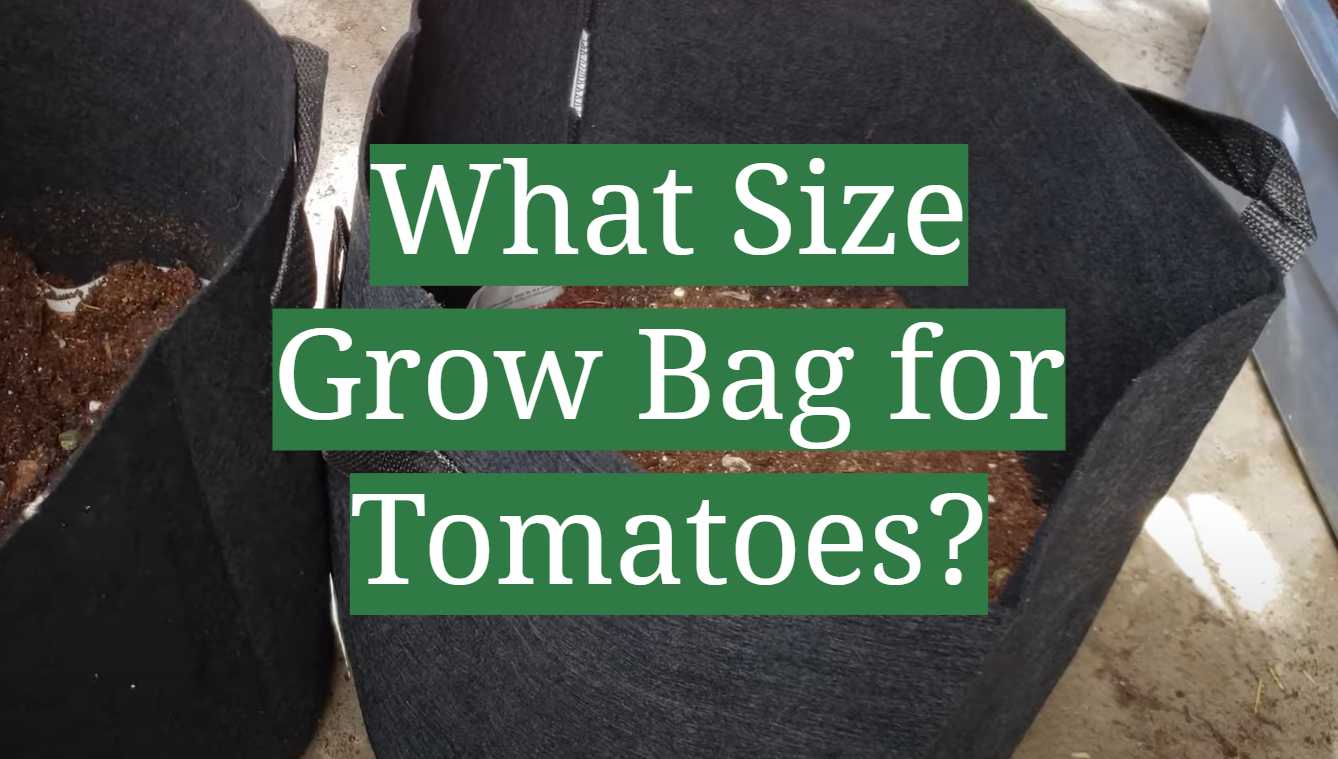




Leave a Reply
View Comments